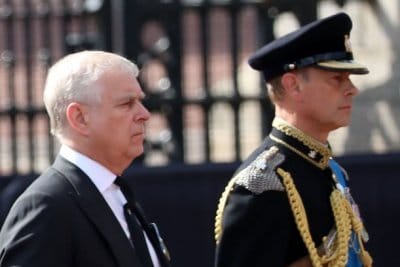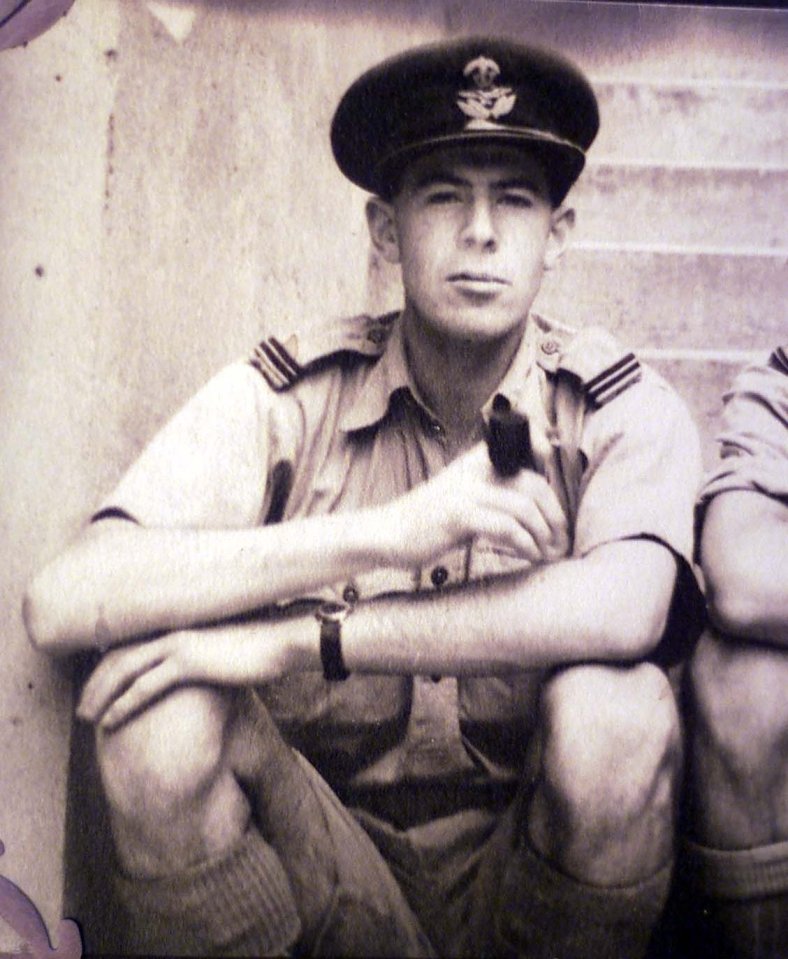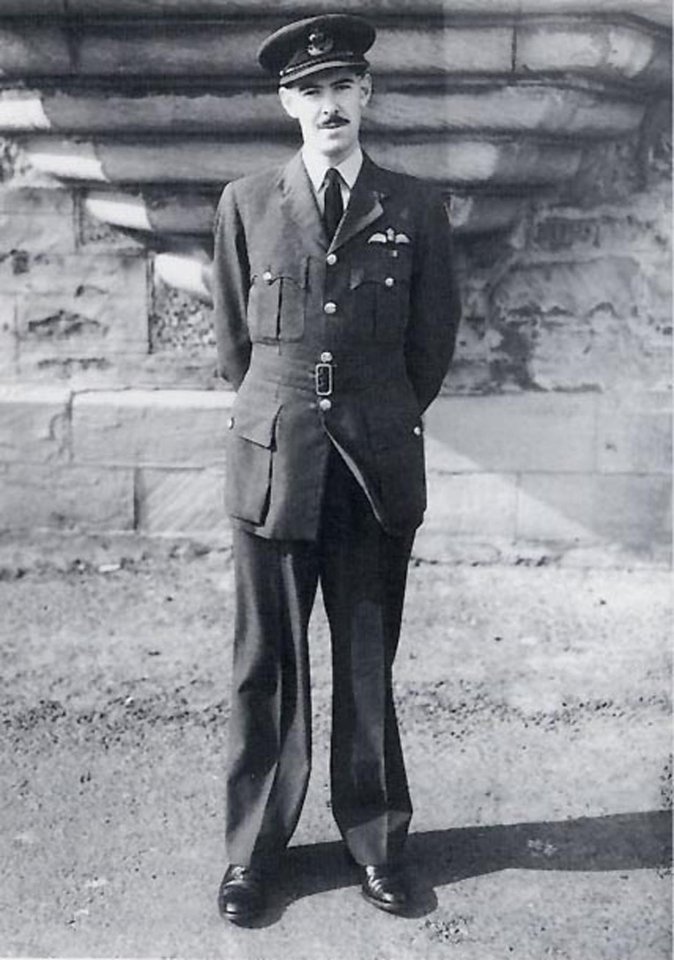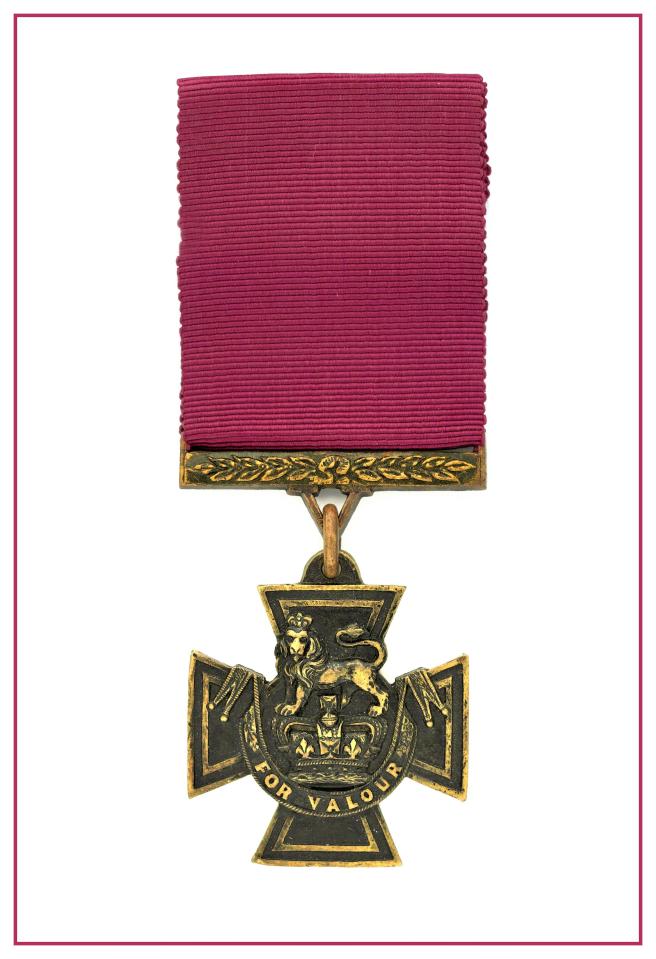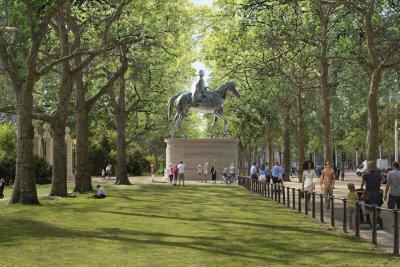Prince Andrew gives up royal titles amid ties to Epstein

1 of 2 | Prince Andrew attends a commemorative ceremony of the 75th anniversary of the liberation of Bruges, in Brugge, Belgium, on Sept. 7, 2019. On Friday, the prince gave up his royal titles. File Photo by Julien Warnand/EPA
Oct. 17 (UPI) — Prince Andrew, facing scrutiny of his ties to sex offender Jeffrey Epstein, on Friday said he will relinquish his royal titles, including Duke of York, and end his membership of the Order of Garter.
Andrew, who made the announcement after meeting with his brother, King Charles III, will only retain the title of prince, which is required because he was born the son of a queen, Elizabeth II.
Andrew, 65, remains eighth in line to the throne. His other siblings are Princess Anne and Prince Edward.
The last time a duke title was taken away was more than 100 years ago, historian Anthony Seldon told BBC News TV. In 1919, Prince Charles Edward, who was one of Queen Victoria‘s grandsons, lost the title of Duke of Albany for fighting on the German side during World War I.
“In discussion with The King, and my immediate and wider family, we have concluded the continued accusations about me distract from the work of His Majesty and the Royal Family,” Prince Andrew said in a statement released by Buckingham Palace. “I have decided, as I always have, to put my duty to my family and country first. I stand by my decision five years ago to stand back from public life.”
In 2019, he was stripped of his military titles and positions on several charities.
Andrew has denied accusations against him by Virginia Giuffre in a 2015 lawsuit, and has never been arrested in connection with the abuse allegations. They reached an undisclosed out-of-court settlement in 2022.
“With His Majesty’s agreement, we feel I must now go a step further. I will therefore no longer use my title or the honours which have been conferred upon me,” Andrew said on Friday. “As I have said previously, I vigorously deny the accusations against me.”
Other members of the royal family were consulted during the discussions, including William, the Prince of Wales, and son of Charles, CNN reported.
“Things are simply not going away,” Robert Hardman, who has written a biography of KingCharles, told the BBC.
“Nothing really has changed constitutionally. What has changed is that he’s not going to use these titles.”
Andrew’s former wife, Sarah, the Duchess of York, will be known as “Sarah Ferguson.”
Their daughters, Princess Beatrice and Princess Eugenie, will not be affected by the decision.
Andrew will no longer attend any royal family’s Christmas events, a source told CNN, but will continue to reside at the Royal Lodge in Windsor in a private tenancy agreement.
Giuffre, who died on April 25 by suicide at 41, alleged Epstein trafficked her and forced her to have sex with friends in 2001, including Andrew. She said Andrew was aware she was underage at 17.
Giuffre also said Andrew sexually abused her on Epstein’s private island in the U.S. Virgin Islands, his mansion in Manhattan and at his former girlfriend Ghislaine Maxwell’s home in London.
The Guardian this week published extracts from the memoir of Giuffre. She claimed the prince “believed that having sex with me was his birthright.”
Andrew also faced scrutiny of his links to an alleged Chinese spy, Yang Tengbo.
A tribunal hearing in December upheld an earlier decision to bar Yang from the British. It was revealed Yang was authorized to act on Andrew’s behalf during business meetings with potential Chinese investors in Britain.
